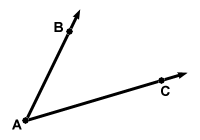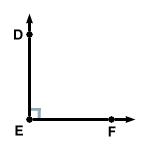Please wait while we process your payment
If you don't see it, please check your spam folder. Sometimes it can end up there.
If you don't see it, please check your spam folder. Sometimes it can end up there.
Please wait while we process your payment

By signing up you agree to our terms and privacy policy.
Don’t have an account? Subscribe now
Create Your Account
Sign up for your FREE 7-day trial
By signing up you agree to our terms and privacy policy.
Already have an account? Log in
Your Email
Choose Your Plan
Individual
Group Discount
Save over 50% with a SparkNotes PLUS Annual Plan!
 payment page
payment page
Purchasing SparkNotes PLUS for a group?
Get Annual Plans at a discount when you buy 2 or more!
Price
$24.99 $18.74 /subscription + tax
Subtotal $37.48 + tax
Save 25% on 2-49 accounts
Save 30% on 50-99 accounts
Want 100 or more? Contact us for a customized plan.
 payment page
payment page
Your Plan
Payment Details
Payment Summary
SparkNotes Plus
You'll be billed after your free trial ends.
7-Day Free Trial
Not Applicable
Renews July 22, 2025 July 15, 2025
Discounts (applied to next billing)
DUE NOW
US $0.00
SNPLUSROCKS20 | 20% Discount
This is not a valid promo code.
Discount Code (one code per order)
SparkNotes PLUS Annual Plan - Group Discount
Qty: 00
SparkNotes Plus subscription is $4.99/month or $24.99/year as selected above. The free trial period is the first 7 days of your subscription. TO CANCEL YOUR SUBSCRIPTION AND AVOID BEING CHARGED, YOU MUST CANCEL BEFORE THE END OF THE FREE TRIAL PERIOD. You may cancel your subscription on your Subscription and Billing page or contact Customer Support at custserv@bn.com. Your subscription will continue automatically once the free trial period is over. Free trial is available to new customers only.
Choose Your Plan
This site is protected by reCAPTCHA and the Google Privacy Policy and Terms of Service apply.
For the next 7 days, you'll have access to awesome PLUS stuff like AP English test prep, No Fear Shakespeare translations and audio, a note-taking tool, personalized dashboard, & much more!
You’ve successfully purchased a group discount. Your group members can use the joining link below to redeem their group membership. You'll also receive an email with the link.
Members will be prompted to log in or create an account to redeem their group membership.
Thanks for creating a SparkNotes account! Continue to start your free trial.
We're sorry, we could not create your account. SparkNotes PLUS is not available in your country. See what countries we’re in.
There was an error creating your account. Please check your payment details and try again.
Please wait while we process your payment

Your PLUS subscription has expired
Please wait while we process your payment
Please wait while we process your payment

Angles
An angle is a geometric figure consisting of two
rays with a common endpoint. It looks like
this:


Long ago people wanted to measure angles, so numbers were arbitrarily assigned to determine the size of angles. Under this arbitrary numbering system, one complete rotation around a point is equal to a 360 degree rotation. (There is another unit of measure for angles besides degrees called radians, in which one full rotation is equal to 2Π radians; in this text we will use degrees as our default unit for measuring angles.) Two angles with the same measure are called congruent angles. Congruence in angles is symbolized by a small arc drawn in the region between rays. Congruent angles are drawn with the same number of such arcs between their rays. An angle's measure determines how it is classified.
An angle with a measure of zero degrees is called a zero angle. If this is hard to visualize, consider two rays that form some angle greater than zero degrees, like the rays in the . Then picture one of the rays rotating toward the other ray until they both lie in the same line. The angle they create has been shrunk from its original measure to zero degrees. The angle that is now formed has a measure of zero degrees.

An angle with a measure of 90 degrees is called a right angle. A right angle is symbolized with a square drawn in the corner of the angle.

An angle with a measure of 180 degrees is called a straight angle. It looks just like a line. Don't mix up straight angles with zero angles.

Another way to classify angles by their measures is to consider whether the angle's measure is greater or less than 90 degrees. If an angle measures less than 90 degrees, it is called an acute angle. If it measures more than 90 degrees, it is called an obtuse angle. Right angles are neither acute nor obtuse. They're just right.
Please wait while we process your payment

